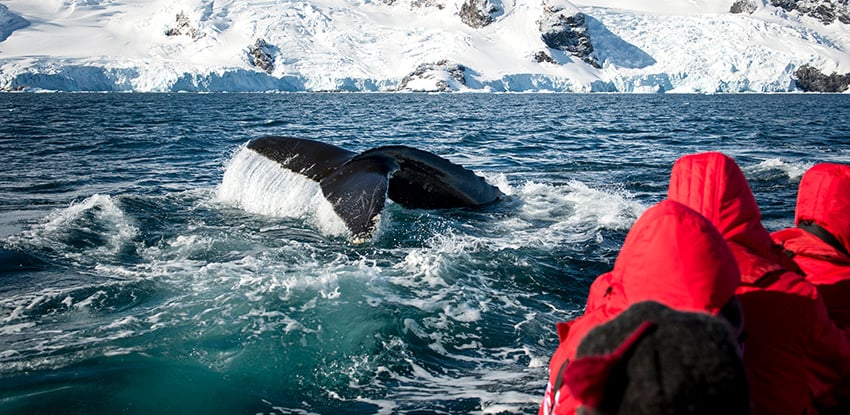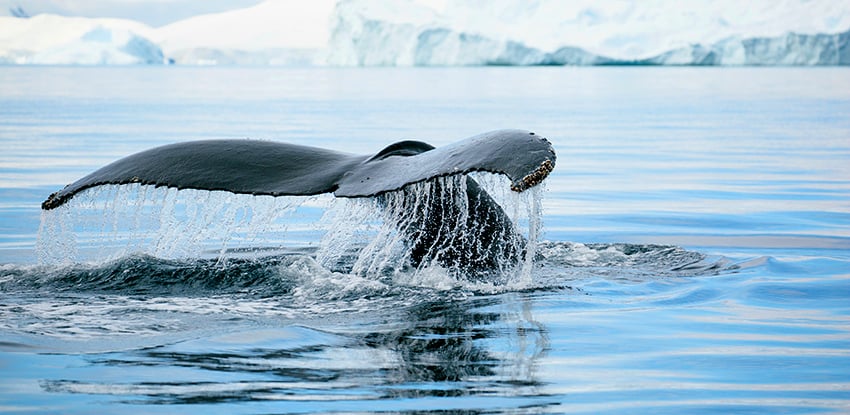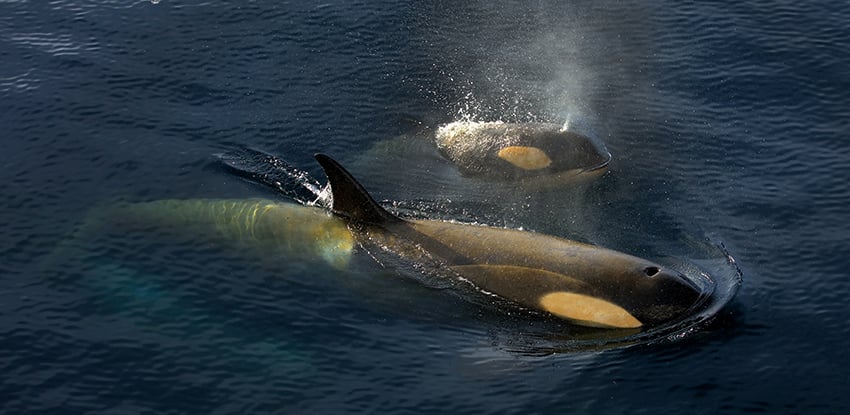Whale Watching in Antarctica

Whales Likely to Be Seen on an Antarctic Cruise
The Southern Ocean is one of the most biologically rich bodies of water in the world. Constantly stirred up by wind and currents, a steady supply of nutrients contributes to prolific blooms of microscopic plankton, which become so thick in summer they can be seen from space. The plankton is food for prodigious swarms of Antarctic krill (small, shrimp-like creatures), which can reach densities of 30,000 individuals per cubic meter. These, in turn, are hunted by a diversity of marine mammals, including some of the largest predators on Earth.
Once hunted by humans on an industrial scale to the brink of extinction, the whales of the southern ocean have been slowly increasing their numbers since commercial whaling was banned by the International Whaling Commission in 1986. Today Antarctica is one of the best places in the world to view a variety of whale species. Here is a look at some of the whales you can spot on your .
Humpback Whale

Humpback whales (Megaptera novaeangliae) arrive in mid-summer from their tropical breeding areas near Brazil to gorge themselves on copious swarms of krill in Antarctic waters. From December through March, humpbacks are particularly abundant in coastal waters around the Antarctic Peninsula, where they are the most frequently seen and most extroverted of the large whale species. They are easily identified by their large size (11–18 meters, 25–45 tonnes) and by their tall, bushy blows. They readily approach ships and will often put on a show of slapping their huge wing-like flippers on the surface of the water and rising their huge black and white flukes before diving. These gregarious whales can also be enjoyed at close range by kayakers.
Antarctic Minke Whale
The Antarctic minke whale (Balaenoptera bonaerensis) has recently been classified as a separate species from the common minke whale seen elsewhere in the world. It is the most abundant whale in the Southern Ocean. Although, because of its medium size (8–11 meters, up to 13 tonnes) and introverted behavior, it is not the most conspicuous whale. With a present population in the hundreds of thousands, they are thought to be more numerous now than before commercial whaling began because of the greater food resources left behind by the more heavily exploited whales. They are very common in the Drake Passage, though one must keep a watchful eye out for their sharp dorsal fin as they slip surreptitiously past the ship. Better viewing can be had in coastal waters around the Antarctic Peninsula, where small groups of minke whales are commonly found around ice and are known to play around Zodiacs.
Orca (Killer Whale)

Sighting a pod of orcas, also known as killer whales (Orcinus orca), is often a highlight of any Antarctica cruise. The largest members of the dolphin family, these energetic cetaceans are easily recognized by their robust black and white bodies (7–10 meters, 5.5–10 tonnes) and unmistakable dorsal fin: falcate in females; straight and tall in males. Like wolves, orcas are very social and hunt in packs, preying on seals and even larger whales. Orcas are intelligent, curious animals and it is not uncommon for groups of them to cavort around , thrilling passengers by riding bow waves, slapping their tails and even breaching. Your onboard whale expert will let you know if you have encountered orcas of the Type A or Type B morphotype.
Fin whales are also commonly encountered, particularly in the Drake Passage from December onwards or around the South Shetland Islands in February and March. Rarer species include blue whale, sei whale, sperm whale, southern bottlenose whale, and Arnoux’s beaked whale.